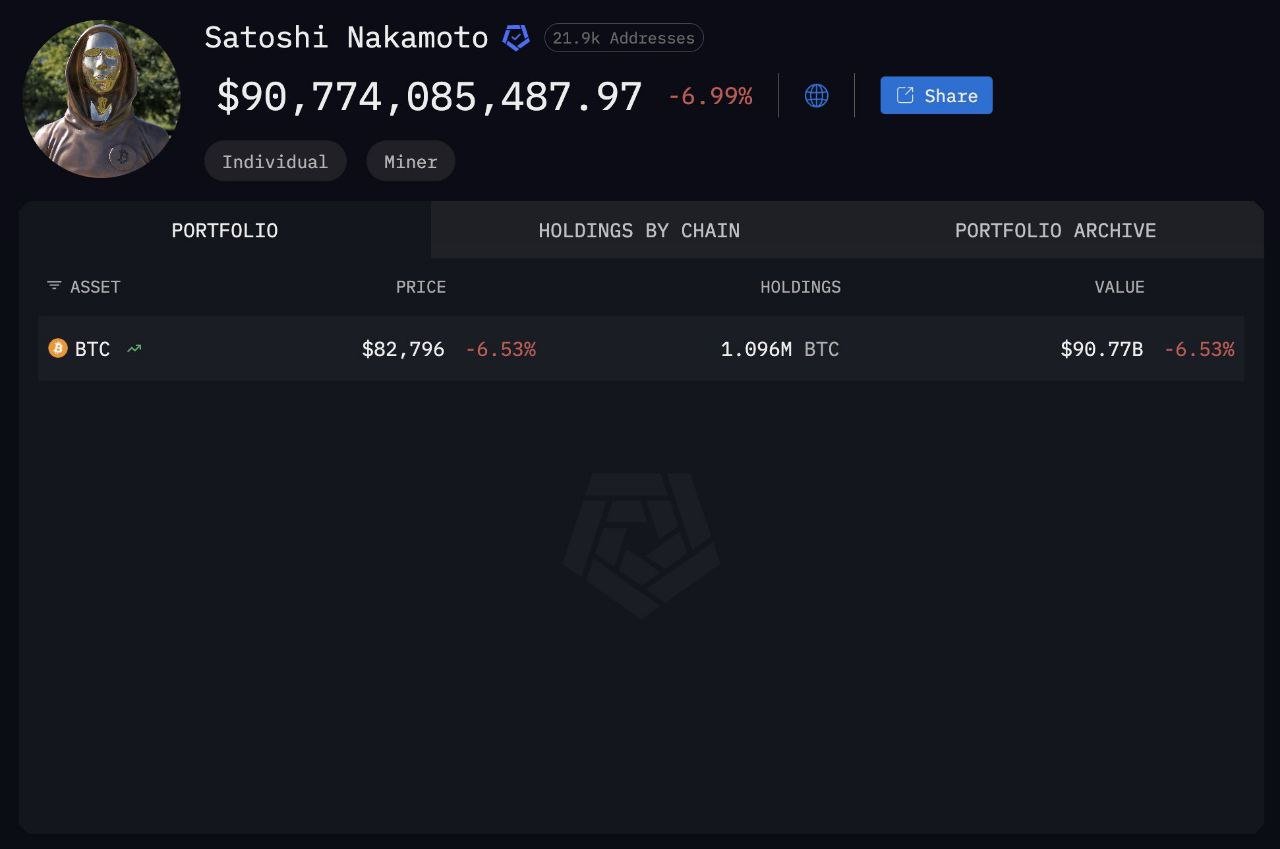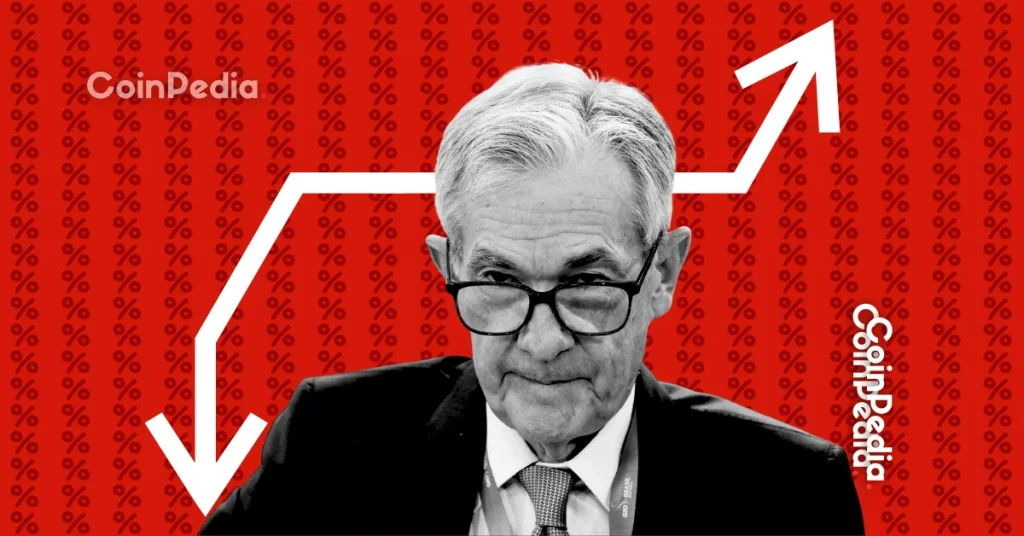Satoshi Nakamoto’s legendary Bitcoin fortune just took a massive hit, with the wallet dropping $47 billion from its all-time high and falling to roughly $90.7 billion.
This happened during a violent market correction that blindsided traders across the United States and Asia, which dragged Bitcoin down to about $80,500 on Friday, putting the token on track for its worst month since Terra’s collapse in 2022 wiped out $60 billion and triggered the bankruptcies that later pulled FTX under.
 Satoshi Nakamoto’s Bitcoin holdings. Source: Arkham Intelligence/X
Satoshi Nakamoto’s Bitcoin holdings. Source: Arkham Intelligence/XThe broader market lost around half a trillion dollars in Bitcoin value during these past weeks.
Even though Bitcoin is still up compared to the pre-election low it hit before President Donald Trump returned to the White House last November, most of that early rally has evaporated during his first year back in office.
This time, the pain is hitting new players too. Exchange-traded funds brought in retail traders and Wall Street firms, but those same positions are now under pressure as prices keep sliding.
Institutional exits sabotage Bitcoin
The trigger for this slide hasn’t been clear. The new ETF structure didn’t exist during previous crashes. But funds tied to Bitcoin saw billions flow out this month, with buyers such as Harvard’s endowment and hedge funds pulling back.
Digital-asset treasury companies (those publicly traded companies modeled after Michael Saylor’s Strategy) faced even heavier withdrawals. Investors are questioning why a corporate shell holding coins should be valued above the tokens it owns.
Crypto’s investor base has expanded far beyond long-term enthusiasts willing to HODL through storms. Now the market includes institutional players who don’t hesitate to cut risk.
Fadi Aboualfa, head of research at Copper Technologies, said, “What’s happened these last two months was like rocket fuel, as if people were expecting this to crash. That’s what institutional investors do. They’re not there to hold, they don’t have that mentality. They rebalance their portfolio.”
Even after the plunge, Bitcoin remains up about 50% from its pre-election low. But this decline is far smaller than the 75% crash during the 2021–2022 bear market, a period that exposed many major failures, including Celsius, BlockFi, and Three Arrows.
Tracking the liquidity strains weighing crypto down
This selloff didn’t start with fraud or a new scandal. Some traders think it’s driven by weak liquidity, technical pressure, and shaken confidence. Luke Youngblood, founder of Moonwell, said:
“We aren’t following the same path down; overall macro conditions, government support, and fewer bad actors in the space make today’s market more resilient. The foundations crypto is building on are stronger, even if there are causes for concern down the line.”
The key event was a flash crash on October 10, when $19 billion in leveraged bets was liquidated within hours. Weak weekend liquidity and too much leverage on certain exchanges pushed Bitcoin off its peak of $126,251 reached days earlier.
Cantor analysts Brett Knoblauch and Gareth Gacetta wrote, “It feels as if some big players in the space are being forced to sell, as what happened on 10/10 might have had a far-larger impact on balance sheets than initially thought.”
Liquidity is still thin. Market makers weakened by the crash can’t always support prices. Another $1.6 billion in leveraged positions were liquidated on Friday as the latest drop hit traders. Bitcoin’s “digital gold” image faded while actual gold held steady. Crypto is trading like a pure risk asset again.
This week, Bitcoin tangled with volatile trading in tech stocks. The S&P 500 jumped early Thursday on strong Nvidia earnings, then recorded its biggest intraday reversal since the April tariff turbulence. Analysts at Nomura linked part of the move to crypto. Bill Ackman said Fannie and Freddie holdings behaved like a crypto proxy.
The market is tied to AI-driven optimism, and any fear can spark selling. Inside crypto, risk is rising as companies try to copy Michael Saylor’s treasury model. If confidence breaks, forced selling could follow, especially since many holders are already underwater.
Adam Morgan McCarthy from Kaiko said, “When you’ve got a medical device company or a cancer research firm rebranding as a crypto treasury, it’s a sign of where you are in the cycle.”
Sentiment keeps sliding. The Fear and Greed Index dropped to 11 out of 100, showing extreme fear. Chris Newhouse from Ergonia said, “Fear sentiment has spiked to relative highs while structural demand for spot remains notably absent, leaving the market without the natural buyers typically present during significant corrections.”
Want your project in front of crypto’s top minds? Feature it in our next industry report, where data meets impact.















 English (US)
English (US)